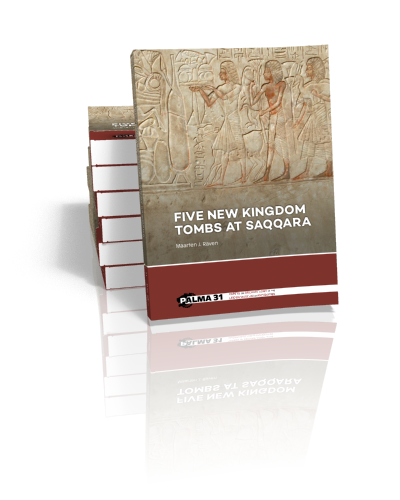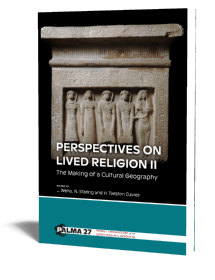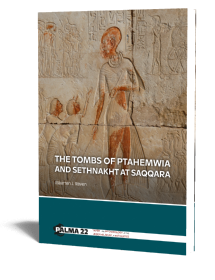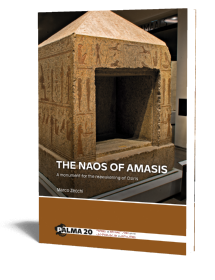Abstract:
The five tombs dealt with in this book were explored between 2009 and 2017 by the Leiden-Turin Expedition in the New Kingdom necropolis of Saqqara. All of them can be described as minor tombs, constructed wherever some space was still available in the cemetery between the major monuments of 18th Dynasty date. Some of them were clearly built against the exterior walls of these previous monuments, whereas their unusual plans show how the builders had to adapt to the cramped conditions in the cemetery.
The five tombs vary in date from the very end of the 18th Dynasty to well into the Ramesside period. The most important one was built for Ry, an army officer who must have served under general (later Pharaoh) Horemheb. The rediscovery of his tomb finally enables us to understand the provenance of a whole series of reliefs now in the Berlin Museum and elsewhere.
The set of five also comprises two tombs of priests in the temple of Ptah, the Memphite town god. Both Khay and Tatia served in the sanctuary as carrier of the divine barque during processions, combining this office with other jobs: chief royal gardener in the case of Khay, and chief of goldsmiths for Tatia. The latter was a contemporary of Pharaoh Ramesses II, whereas Khay seems to have lived slightly earlier.
The tomb of Samut is a very humble affair consisting of a rare four-sided stela standing next to a simple burial shaft. The owner was a simple stone-mason or necropolis workman, and the presence of his funerary monument in what used to be an elite cemetery comes as a surprise. Less informative is the fifth tomb of this series, which is no more than an unfinished and anepigraphic limestone chapel with a now inaccessible shaft in front.
Contents
Preface
Staff of the Expedition, 2009–2022
I. The site and its history
Maarten J. Raven
II. The tomb of Khay II
Maarten J. Raven
III. The tomb of Samut
Maarten J. Raven
IV. The tomb of Ry
Nico T.B. Staring, with a section by Maarten J. Raven
V. Tomb 2013/7
Maarten J. Raven
VI. The tomb of Tatia
Vincent Oeters, with a section by Maarten J. Raven
VII. Reliefs and inscriptions without context
Maarten J. Raven
VIII. Objects
Maarten J. Raven
IX. Pottery
Barbara G. Aston
X. Skeletal remains
Ladislava Horáčková, Ali Jelene Scheers, and Sarah Schrader
Concordance of excavation numbers and catalogue numbers
Spatial distribution of finds
List of designated features
Abbreviations
Bibliography
Indices


Prof. dr.
Maarten J. Raven
Maarten J. Raven worked as Curator of the Egyptian Department of the Rijksmuseum van Oudheden (National Museum of Antiquities) at Leiden, The Netherlands, from 1978 to 2018, and is now honorary research associate of that institution. In this capacity he organized numerous exhibitions, especially on the Leiden papyrus collection, mummy research, Dutch excavations in Egypt, and Egyptian magic. He was also responsible for the new display of the Egyptian collection (2016). He wrote numerous books and articles on egyptological subjects, and was also active as tour conductor and lecturer. His special interests include the history of egyptology, egyptomania, and ancient Egyptian technology and symbolism. From 2012 to 2018, he was extraordinary professor for the museology of Ancient Egypt at Leiden State University.
read more












